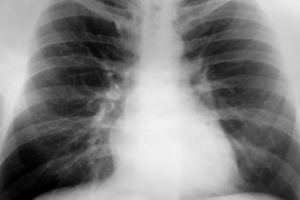 A study of the lung tissue of miners killed in the 2010 Upper Big Branch Mine disaster has determined that most of the victims had black lung disease – more evidence that the deadly disease is experiencing a resurgence in the U.S.
A study of the lung tissue of miners killed in the 2010 Upper Big Branch Mine disaster has determined that most of the victims had black lung disease – more evidence that the deadly disease is experiencing a resurgence in the U.S.
"It's a confirmation of what we've been seeing, that there's a problem out there," said Dr. Robert Cohen, the lead researcher and chairman of pulmonary and critical care medicine at Cook County Health and Hospital System in Illinois.
Cohen and his team found that 86 percent of those examined exhibited scarring characteristic of black lung, a pulmonary disease caused by inhaling coal dust over long periods of time. Despite that, at least two of the miners examined in the study worked in mines for less than five years.
Prior to 1969, when Congress passed a law requiring mine operators to limit respirable dust levels, nearly half of all miners who worked 25 years contracted the disease. In the decades following the passage of the law, there was a significant decline in the incidence of black lung.
However, in the 1990s, black lung disease came roaring back, according to the National institute for Occupational Safety and Health (NIOSH).
An investigative report by the Center for Public Integrity blames a monitoring system that it says is “tailor-made for cheating,” regulators who have failed to enforce the rules and failed attempts at reform. The report also notes that the newer cases of the disease include an increasing number of the most severe form, and are found more and more among younger miners with less exposure time to respirable coal dust.
Preliminary results of the study were posted online last week and are being presented at the American Thoracic Society's annual conference in Philadelphia.
Black lung disease claimed the lives of nearly 10,000 miners between 1996 and 2005, according to NIOSH statistics.
